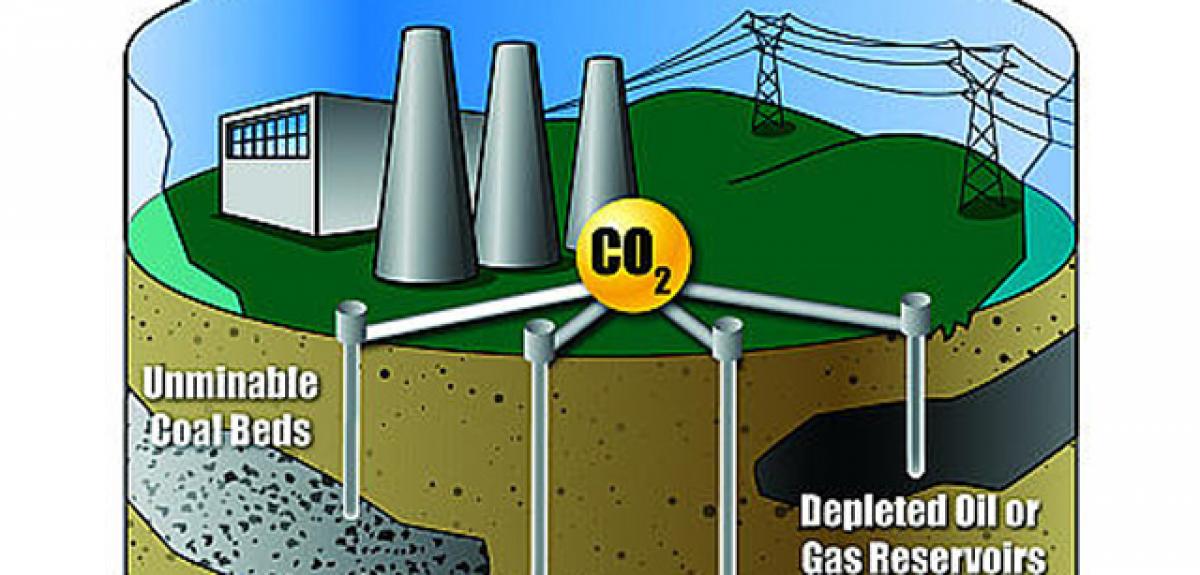Live
- Tension escalates at Gun Park as Harish Rao arrives with resignation letter over farmer loan waiver
- Delhi Civic Body Elections Postponed Due To Presiding Officer Nomination Delay
- Arun Govil Rebuts "Outsider" Label Ahead Of Lok Sabha Debut In Meerut
- 15 Telangana boys bag perfect 100 percentile in JEE Mains Session–II
- Bheemili developed with Rs 3,800 cr in TDP rule: Ganta
- Special Police Observer reviews poll arrangements
- TS LAWCET, PGLCET registration date extended
- Andhra Paper lockout creates stir
- Cyberabad cops ban drone flights for V-P visit today
- Petrol and diesel prices today stable in Hyderabad, Delhi, Chennai and Mumbai on 26 April
Just In

James Hansen, a noted climate scientist and lead author of ‘Young people\'s burden: requirement of negative CO2 emissions,’ warns that there \"is no time to delay\" on climate change efforts and argues that they must go beyond just slashing emissions of CO2 \"the dominant control knob on global temperature\" to extracting CO2 from the air, or \"negative emissions.\"
James Hansen, a noted climate scientist and lead author of ‘Young people's burden: requirement of negative CO2 emissions,’ warns that there "is no time to delay" on climate change efforts and argues that they must go beyond just slashing emissions of CO2 "the dominant control knob on global temperature" to extracting CO2 from the air, or "negative emissions."
The team of international researchers say the goal should be getting atmospheric CO2 reduced to less than 350 parts per million (ppm), as that would lead to global average temperatures decreasing to about 1 degree Celsius of warming relative to pre-industrial levels later this century.
If phasedown of fossil fuel emissions begins soon, improved agricultural and forestry practices, including reforestation and steps to improve soil fertility and increase its carbon content, may provide much of the necessary CO2 extraction. Most proposals to limit global temperature rises to well below 2° Celsius rely on ‘negative emissions’ – the removal of carbon from the atmosphere.
This can be done naturally, such as by protecting and restoring degraded forests so they become carbon sinks. Some also claim that it can be done through geo-engineering, for instance by burning bioenergy, capturing the carbon released, and pumping it into underground geological reservoirs. This is known as Bioenergy, Carbon, Capture and Storage (BECCS), according to fern.org.
A recent ground-breaking discovery made by researchers at Columbia University’s Lamont-Doherty Earth Observatory might be a game-changerin the field of carbon-sucking technologies. The scientists discovered how to quickly transform the planet-warming gas into a mineral by making it react with a type of rock that is abundantly available from the Earth’s mantle.
A project that would inject millions of tons of carbon dioxide into the basalt of the Pacific Northwest is already underway. Further encouraging is that Global Thermostat, a private company led by one of the Columbia scientists, is monetizing the benefits of this transformative technology and creating a market for captured carbon dioxide.
The focus on renewable energies and the efforts to make hydro, wind and PV technologies more efficient are critical, but even more important is to scale up the development of carbon-negative technologies. To do so, governments must step in and heavily subsidize R&D in the field, and must make carbon capture technologies more affordable for the end-customer through tax credits for instance, according to http://www.huffingtonpost.com.

© 2024 Hyderabad Media House Limited/The Hans India. All rights reserved. Powered by hocalwire.com







